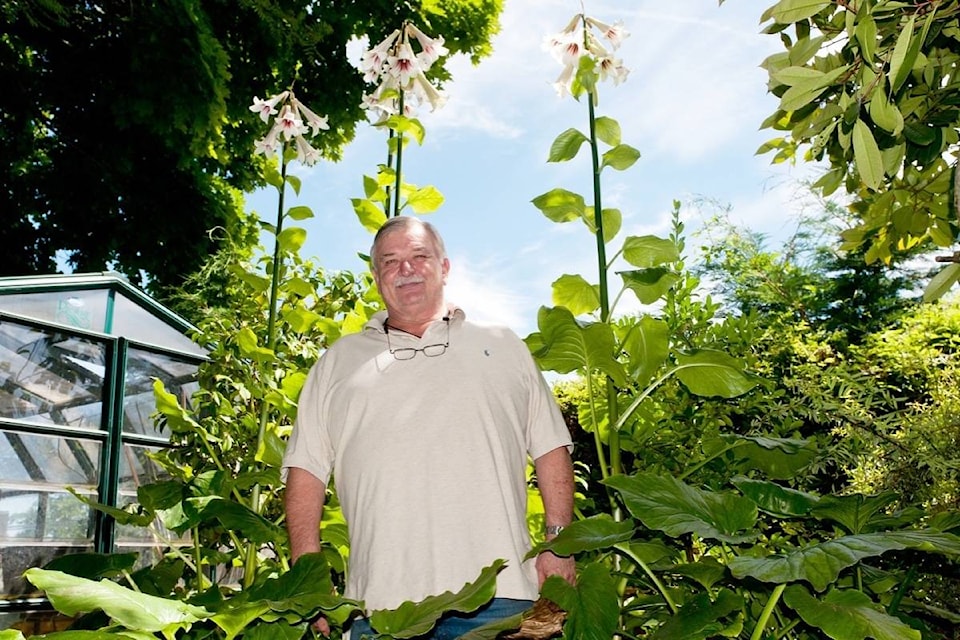The giant Himalayan lily is a tower of flower also known as “Queen of the Garden.”
So that must make Qualicum Beach gardener Greg Brower the king of local green thumbs.
Brower, who started with a single bulb purchased from a now-defunct Parksville nursery “seven or eight years ago,” had four of the distinctive, 10-foot-tall lilies burst into bloom this week.
“I tell people about these plants, and they’ll say, ‘Oh, yeah, my lilies are really big, too,’” said Brower. “But there’s nothing quite like this.”
Brower said a Parksville gardener grew one of the giant lilies to bloom a couple of years ago, “and they threw a party.” But as far as he’s aware, the only other garden featuring the plant in coastal B.C. is at the University of British Columbia.
“It takes seven years to grow one from seed,” he said. “They only last and flower for about a week. They’re difficult to start — you have to read up on it.”
Brower, 64, is a retired cabinetmaker and kitchen contractor who now spends his days gardening around his Qualicum Beach home.
, which happens to be the original caretaker’s cottage of the Qualicum Beach Inn dating to 1908. He and his wife have lived there since 1987.
He said his first giant Himalayan bulb, purchased from the former Canfor Nursery, “did nothing” the first year after he planted it. In the second year, it produced a low plant with large, deep-green leaves. But it also produced secondary bulbs, which he spread to large planter tubs to propogate.
As his original bulb finally sent up its distinctive flower stalk — a pole that can grow to 3.5 metres — he was well on his way to his current collection of 100 bulbs.
Brower said the plant, which is native to the Himalayas and China, is the first bulb out of the ground in late winter. And when the flower stalks begin growing, they can rise an inch and a half per day.
“I know; I’ve gotten out my tape measure,” he said.
Each bulb that flowers then dies, though it leaves behind secondary bulbs and seed pods. Of course, those can take years to actually produce new flowers, so Brower is never quite sure which of his plants will bloom in a given year. But his collection has led to him building a separate garden, started last fall, for the unique plants. And some research on the internet has him contemplating a new line of work.
“If you try to find them online, they disappear as soon as they go up for sale,” he said. “The seeds cost $12,000 an ounce on the internet, and I’ve got 50,000 seeds. I’d like to be able to sell them to people.”
